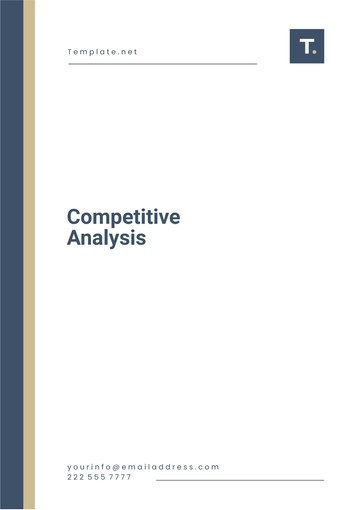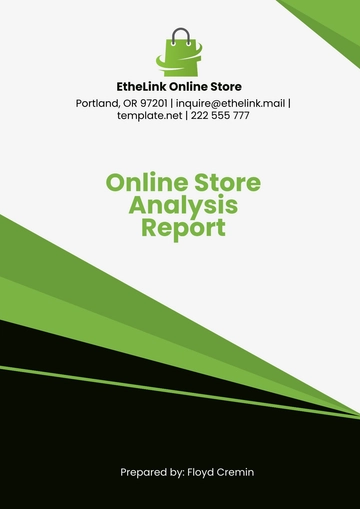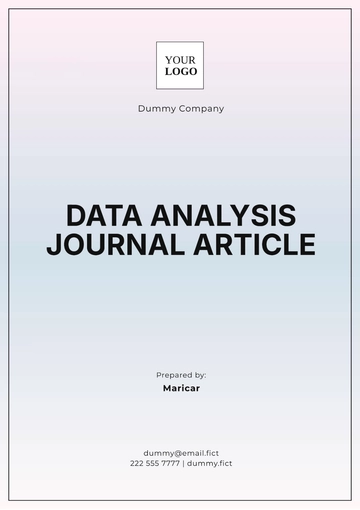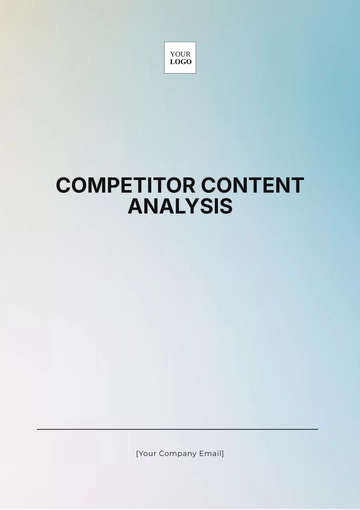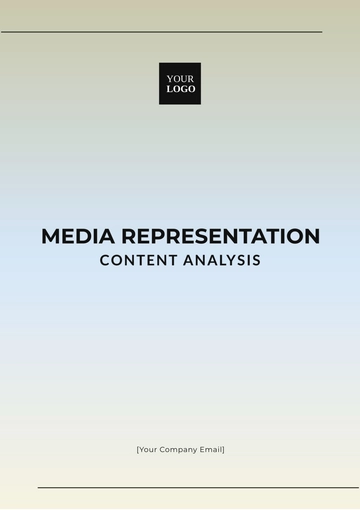Free Thematic Analysis in Gender Diversity

Prepared By: [Your Name]
I. Introduction
Gender diversity has emerged as a critical issue across various domains, including education, corporate environments, and societal structures. This thematic analysis aims to explore the complexities, challenges, and opportunities associated with gender diversity. By identifying and examining key themes, this document seeks to provide actionable insights and recommendations for fostering inclusivity and equity across different sectors. [Your Company Name] is committed to advancing these goals through targeted analysis and strategic recommendations.
II. Methodology
A. Data Collection
The data for this analysis was gathered through a comprehensive approach, combining qualitative and quantitative methods:
Literature Review: Analysis of academic articles, policy papers, and industry reports to understand existing research and identify gaps.
Expert Interviews: Conversations with subject-matter experts, including diversity consultants, organizational leaders, and advocates, to gain practical insights and firsthand experiences.
Surveys: Distribution of surveys across various demographics to collect data on gender representation, experiences of bias, and effectiveness of diversity policies.
B. Data Analysis Process
The data analysis followed a systematic approach to identify and interpret recurring themes:
Data Familiarization: Conducting a detailed and careful analysis of the collected data to grasp its context and appreciate its nuances and subtleties.
Generating Initial Codes: The procedure entails developing preliminary codes to systematically categorize and organize the key concepts and recurring themes identified during the data analysis.
Searching for Themes: The process involves carefully collecting and organizing different codes into separate categories, which are then analyzed and interpreted to uncover potential themes that represent the main trends and patterns in the data.
Reviewing Themes: The process involves refining themes to ensure they accurately reflect the data by thoroughly verifying their relevance and consistency with the entire data set.
Defining and Naming Themes: Delineating and designating each thematic element in such a way that the representation of the fundamental ideas and concepts is precise and accurate.
Producing the Report: The process of compiling the findings and subsequently presenting them in a manner that is both structured and coherent.
III. Findings
A. Theme 1: Gender Representation and Participation
This theme explores the distribution and participation of different genders across various sectors. Key insights include:
Underrepresentation of Women in STEM Fields: Women continue to be significantly underrepresented in STEM (Science, Technology, Engineering, and Mathematics) fields due to systemic barriers and cultural biases.
Overrepresentation of Men in Leadership Roles: Men are disproportionately represented in top leadership positions across industries, affecting organizational dynamics and decision-making.
Increasing Visibility of Non-Binary Individuals: The recognition and participation of non-binary individuals are increasing, though they still face unique challenges in traditional gender-binary systems.
Sector Analysis:
Discussion:
Technology: Despite a high percentage of men, initiatives like STEM outreach programs and mentorship for women are crucial for improving gender balance.
Healthcare: The higher representation of women reflects greater gender parity in this sector, yet leadership roles are still predominantly held by men.
Education: The higher representation of women may suggest gender parity in entry-level positions but warrants further investigation into leadership roles.
Theme 2: Workplace Policies and Practices
This theme examines how different policies and practices impact gender diversity within organizations:
Effectiveness of Gender-Neutral Hiring Practices: Gender-neutral hiring practices are effective in reducing unconscious bias and promoting fairness in recruitment processes.
Parental Leave Policies: Variations in parental leave policies across countries and cultures influence gender equality and work-life balance.
Flexible Working Arrangements: Flexible work arrangements, such as remote work and flexible hours, are highly beneficial in accommodating diverse needs and supporting gender diversity.
Policy/Practice Analysis:
Policy/Practice | Implementation Rate | Effectiveness | Comments |
|---|---|---|---|
Gender-Neutral Hiring | 60% | High | Effective in reducing bias and promoting diversity. |
Parental Leave | 70% | Medium | Effectiveness varies; some countries offer more generous leave. |
Flexible Working | 80% | High | Enhances work-life balance and supports diverse work needs. |
Discussion:
Gender-Neutral Hiring: Implementation of gender-neutral hiring practices helps mitigate biases but requires continuous evaluation and adaptation.
Parental Leave: Diverse parental leave policies affect gender equality; organizations can advocate for standardized and equitable leave benefits.
Flexible Working: Flexibility in the workplace supports not only gender diversity but also overall employee satisfaction and productivity.
C. Theme 3: Gender Bias and Discrimination
This theme highlights the prevalence and impact of gender bias and discrimination:
Implicit Bias: Implicit biases favoring male candidates for technical and leadership roles continue to influence hiring and promotion practices.
Gender Pay Gap: The persistent gender pay gap remains a critical issue, with women often earning less than their male counterparts for similar roles and responsibilities.
Discrimination in Promotions: Gender-based discrimination in promotions limits career advancement opportunities for women and non-binary individuals.
Case Studies:
Industry | Case Study Description | Outcome |
|---|---|---|
Finance | Female employees challenged pay inequality | Resulted in policy changes and the enforcement of equal pay practices. |
Sports | Bias in selection criteria for female coaches | Led to a revision of selection procedures and greater transparency in hiring. |
Discussion:
Implicit Bias: Addressing implicit bias requires comprehensive training and awareness programs to change organizational culture.
Gender Pay Gap: Regular audits and transparency in pay structures can help mitigate disparities.
Promotional Discrimination: Implementing clear and objective criteria for promotions can reduce gender-based discrimination.
IV. Discussion
A. Implications for Organizations
Organizations need to adopt and enforce strategies that promote gender diversity and address discriminatory practices. Key recommendations include:
Diversity Training Programs: Establish ongoing training to educate employees about unconscious biases and inclusive practices.
Gender-Neutral Hiring and Promotion: Develop and implement policies that ensure gender-neutral criteria in hiring and promotional decisions.
Gender Pay Audits: Conduct regular audits to identify and rectify gender pay disparities, and ensure fair compensation practices.
B. Future Research Directions
Future research could focus on:
Impact of Emerging Technologies: Investigate how emerging technologies, such as artificial intelligence and automation, affect gender diversity and employment opportunities.
Long-Term Effects of Diversity Policies: Study the long-term impact of diversity policies on organizational performance, employee satisfaction, and retention.
Gender Diversity in Minority Communities: Explore gender diversity issues within minority communities to understand unique challenges and develop targeted solutions.
V. Conclusion
Gender diversity is not only a moral and ethical imperative but also a strategic necessity for organizational success. By addressing the identified themes and implementing recommended practices, organizations and societies can advance toward a more inclusive and equitable future. This analysis, provided by [Your Company Name], underscores the importance of sustained efforts and strategic planning to promote gender diversity and address systemic inequalities.
- 100% Customizable, free editor
- Access 1 Million+ Templates, photo’s & graphics
- Download or share as a template
- Click and replace photos, graphics, text, backgrounds
- Resize, crop, AI write & more
- Access advanced editor
Delve into the nuances of gender diversity with Template.net's Thematic Analysis in Gender Diversity Template. This customizable and editable resource is designed to help you systematically analyze themes related to gender diversity. Editable in our AI Editor Tool, it provides a clear framework to identify and explore gender-related patterns and themes in your research, promoting a deeper understanding of diversity issues.
